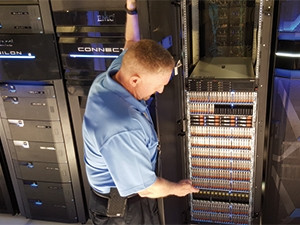
Just as the replacement of the traditional hard disc drive in portable computers has resulted in improvements in speed and power consumption in personal computing devices, so similar improvements are being seen as more and more datacentres adopt flash as a key component of their infrastructure rollout.
Rupert Brazier, country manager South Africa for Pure Storage, says flash storage has provided the industry with the opportunity to move past the legacy of disk and into an era where the performance of storage in the datacentre will be able to match the demands being placed on it by today's applications.
He adds that one of the key challenges faced by all organisations is the data explosion.
"Companies are still struggling with tight IT budgets, while trying to manage large amounts of data. Moreover, these days, companies are demanding higher performance, greater power and efficiency, as a result of new technology initiatives such as cloud computing, virtualisation and big data."
This remains a key area where flash comes into its own with low power consumption and significantly faster access speeds.
"One of the greatest benefits of all-flash storage is performance. Companies have faster access to data so that they can process more transactions and speed up applications and services, leading to increased performance and a competitive advantage as a business," comments Brazier.
Reductions in cost
Key to the adoption of flash as a key technology has been the rapid development of the technology, with many of the issues that stood in the way of the technology's adoption just a few years ago being solved.
Brazier predicts that in the next decade, flash memory will overtake hard drives in performance-intensive applications in the same way that the transition to all flash storage is underway in the consumer sector with the proliferation of smartphones and tablets.
And it's not just large companies that are benefiting from the growth in flash storage; the rapid reductions in the cost of flash memory mean that medium and even small businesses are able to reap the benefits of flash when deploying storage in their organisations.
However, Brazier points out that it will be those that require high performance and low latency that will be able to see the biggest improvement. Virtualised servers and virtual desktop environments require high performance despite highly randomised workloads, for which an all-flash environment is the perfect solution.
Predictions
For any investment of the kind that is required to build the modern datacentre, a certain amount of future-proofing is necessary. Just as the arrival of the iPhone threw the mobile phone business into disarray when it hit the shelves in 2007, the massive growth in social media, video and other forms of data is making it increasingly difficult for CIOs to predict what will be required in five or even ten years' time. The two areas that are the easiest to predict are that more storage will be required and that end-users will want near-instant access to their data. What is unknown is what the scale of these demands is likely to be.
"Existing disk-based technology will not be able to meet the future requirement for capacity, power consumption or performance. Flash is the only existing technology that can do this," he says.
Delivering a datacentre that meets current and future needs is something that poses a challenge to all storage vendors, but with increasingly significant amounts of capital being invested into creating fast and scalable flash storage for the datacentre, it seems unwise to bet against it being the cornerstone of storage in the future.
Thoroughly modern datacentres
David Goulden, CEO of information infrastructure at EMC, believes there are three requirements for every modern business: agility, efficiency and speed.
According to EMC, the response of IT should be to modernise.
He says the modern datacentre is based on four key architecture pillars: flash, cloud-enabled, scale out, and software-defined everything.
Underpinning this is strong protection and trust, and that means backup recovery, business continuity and built-in security.
"Today, as an industry, we spend almost $3 trillion on traditional IT systems. Imagine what we could do if we reduce that by ten percent? Or 20 percent? It would save hundreds of millions of dollars and we would become more agile and more flexible," he says. "The technology for this modernisation is here. These savings would also give us critical funding dollars to fuel the move from the IT systems connected to the internet era to the Internet of Things era."
So how does a business approach this modernisation?
Goulden says most businesses have a wide variety of workloads. While some are existing systems of records, such as ERP systems, others are new systems of engagement, such as digital apps, like Uber. Or they could be smart devices, like Tesla or Fitbit, all of which participate in the Internet of Things.
"We call these new applications cloud-native applications. And for both traditional and cloud-native apps, some of these have high-performance intensity and others are capacity-intensive. The architecture of these two types of applications is fundamentally different, and therefore what they need from the underlying architecture is different as well. In the cloud-native world, the data sets can be a hundred times or even a thousand times bigger than in the traditional application world."
Share